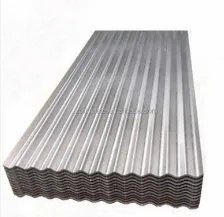
jul . 02, 2025 11:07 Terug naar lijst
Humble Body Carrying All Things: On the Value and Significance of Tin Can
Tin Can, A seemingly ordinary object that carries the process of human civilization has silently served human society with its unique material characteristics and practical functions since its birth. It is not only a container for food preservation, but also a microcosm of industrial production, reflecting multiple dimensions such as economy, culture, and environmental protection.

The initial appearance of Tin Can solved the problem of long-term storage and transportation of food
Compared to other materials such as pottery and glass jars, tin boxes have the advantages of being lightweight, easy to seal, and not easily broken. The tin plating layer on its surface can effectively prevent metal corrosion, isolate air and moisture, and thus delay the process of food spoilage. This is of great significance for long-distance trade, military supplies, and daily reserves for ordinary families, greatly improving people's quality of life and promoting socio-economic development.
Tin Can also played a key role in industrial production
With the advancement of industrial technology, the production process of Tin plates continues to improve, evolving from manual production to mechanized production lines. The large-scale and standardized production of Tin Can not only reduces costs and improves efficiency, but also lays the foundation for the vigorous development of the food industry. Countless canned foods, such as luncheon meat, canned fish, canned fruits, etc., have entered millions of households through Tin Can, enriching people's dining tables and changing their eating habits.
Tin Can not only brings convenience to people, but also faces environmental challenges
The disposal of a large amount of discarded Tin Can has caused pressure on the environment. Therefore, the recycling of tin coil has become crucial. Through effective recycling and reprocessing, Tin Can's materials can be reused, reducing the consumption of natural resources and lowering environmental pollution. Modern society is increasingly emphasizing sustainable development, and Tin Can's environmental treatment has gradually become a focus of attention.
Tin Can also holds symbolic significance in certain cultural contexts
For example, in some developing countries, cheap tin cans for food used to be a symbol of poverty, but now, artistically transformed tin cans can become unique crafts that showcase different cultural connotations. This transition from practicality to art reflects people's creativity and thinking about the reuse of waste.
In summary, Tin Can, as a common packaging material, has value and significance far beyond simple containers. It carries the responsibility of food preservation, witnesses the progress of industrial production, and triggers people's thinking on environmental protection and sustainable development. Starting from a humble body, Tin Can silently serves human society with its unique material characteristics and practical functions, and plays an irreplaceable role in multiple fields such as economy, culture, and environmental protection. In the future, with the advancement of technology and the improvement of environmental awareness, Tin Can will continue to play its unique value on the path of sustainable development.
Tin Can FAQs
What is Tin Can?
Answer: Tin Can is a container made of tin plated steel sheet (tinplate), typically used for storing food, beverages, or other items. It is lightweight, corrosion-resistant, and recyclable, widely used in the canned food industry.
What is the difference between Tin Can and Aluminum Can?
Answer:
Material: Tin Can is mainly made of tin plated steel plate, while aluminum cans are made of aluminum alloy.
Usage: Tin Can is commonly used for food that requires high-temperature sterilization (such as vegetables and meat), while aluminum cans are more commonly used for beverages (such as cola and beer).
Magnetism: Tin Can can usually be attracted by magnets, aluminum cans cannot.
Why is there often a layer of coating on the inner wall of Tin Can?
Answer: Inner wall coatings (such as epoxy resin) are used to prevent direct contact between food and metal, and to prevent chemical reactions (such as tin or iron ion migration) from affecting food flavor or safety.
Can Tin Can be recycled? How to handle it correctly?
Answer: It can be recycled! Correct processing steps:
- Empty the residue and rinse it briefly;
- Remove external labels (if easy to separate);
- Put it into the metal recycling bin or designated recycling point.
What is the historical origin of Tin Can?
Answer: It was invented and patented by British businessman Peter Durand in 1810. It was originally used for military food preservation, but later became the mainstream of civilian food packaging due to the popularity of sealing and sterilization techniques such as pasteurization.
-
Reliable Water Tin Can Supplier | Durable & Sustainable Tinplate Containers
NieuwsNov.24,2025
-
Reliable Water Tin Can Suppliers for Durable and Sustainable Water Storage
NieuwsNov.24,2025
-
Water Tin Can Factory: Sustainable Solutions for Safe Water Packaging
NieuwsNov.23,2025
-
Trusted Galvanized Malleable Iron Manufacturer for Durable Infrastructure Solutions
NieuwsNov.23,2025
-
Trusted Galvanized Malleable Iron Manufacturers | Durable & Custom Iron Components
NieuwsNov.22,2025
-
Galvanized Malleable Iron Factories – Durable & Cost-Effective Industrial Solutions
NieuwsNov.22,2025